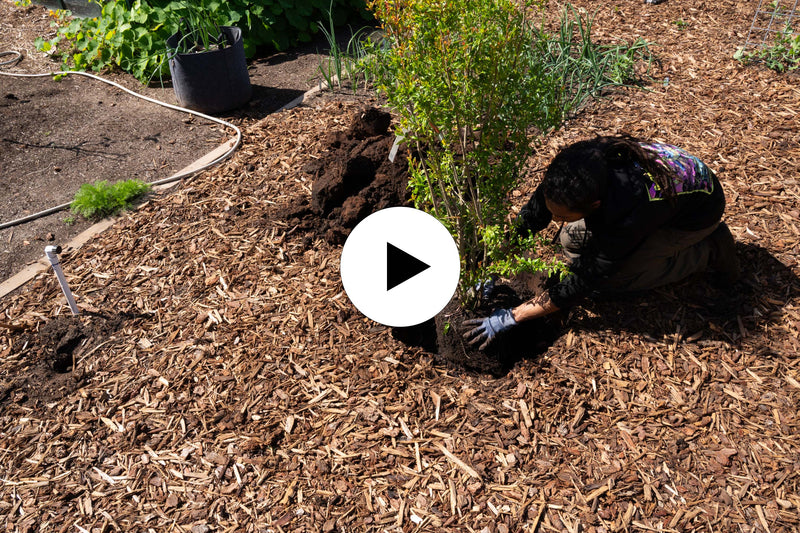


Contender Peach
View More Planting Info
Planting - Plant in USDA zones 5-9 in early spring in soil that is well-draining and slightly acidic. Find a position in full sun or with at least 6-8 hours of sunlight daily. Allow 12 – 15 ft between structures and other plants or trees. Dig a hole twice as wide and the same depth as the root ball. Place the tree in the hole, spreading out the roots. Ensure the graft union is above soil level and backfill with soil that has been enriched with a load of compost. Press the soil down to set the roots, preventing air pockets and water in well. Add a layer of organic mulch around the tree, avoiding the trunk by at least 3 inches.
Climate:
These are excellent peaches for colder areas. They can survive through sub-zero temperatures and still produce abundant fruit in summer.
Thinning:
If the tree produces a lot of fruit, thin them early in the season to prevent branches from breaking. This will make for bigger, healthier peaches.
Fertilizing:
There is a rule amongst Contender peach growers to never fertilize after July 1st. Feed only in early spring with a balanced fertilizer or use a specialized product for orchard trees.
- Product Info
- Care and Maintenance
- Planting Care
- Growing Zone
Product Info
Mature Height: 12-15 ft.
Mature Width: 12-15 ft.
Sunlight: Full-Part Sun
Growth Rate: Fast
Does Not Ship To: AR, AZ, CA, ID, LA, OR, WA
Care and Maintenance
Watering: Contender peaches like to be constantly moist but not waterlogged. In the first year, while the tree is getting established, water well at least once a week and more if it’s hot and dry. Once the tree is well on its way, rely more on rainfall.
Fertilizing: Feed in early spring, just before the plants start new shoots, with a balanced fertilizer. Apply around the drip line of the tree to ensure the nutrients reach the roots.
Pruning: Only prune the trees when they are dormant in winter, or they may become damaged and weak. Remove any dead wood or crossing branches, and shape the tree, allowing light to penetrate to the middle when it starts producing fruit.
Pests and Diseases: Contender peaches are known to be disease-resistant but may suffer from peach leaf curl, bacterial canker, and brown rot. Also, look out for common pests like aphids and scale and manage accordingly.
Pollination: Contender peaches are self-pollinating, but planting more than one together will result in more peaches on both trees.
Harvesting: Once the fruit can be easily twisted off the stem, they are ready for harvest. Make sure they are fully blushed with color and slightly soft before harvesting.
Recovery Time: Transitioning from our nursery to your home can be a bit of a shock to your plant. A short acclimation period helps it recover and reduces stress.
Climate Adjustment: Every environment is unique. Giving your plant time to adjust to the local climate, humidity, and light conditions in a shady spot will set it up for better growth and health.
How to Acclimate Your Plant: Keep the plant in its container and place it in a shady, sheltered area away from high winds. Ensure it's watered adequately – the soil should be moist but not waterlogged. Monitor the plant for any signs of distress and allow it to adjust for a few days before planting. After a few days of acclimation, your plant will be better prepared to thrive in its new home for years to come.
Planting Care
Climate: These are excellent peaches for colder areas. They can survive through sub-zero temperatures and still produce abundant fruit in summer.
Thinning: If the tree produces a lot of fruit, thin them early in the season to prevent branches from breaking. This will make for bigger, healthier peaches.
Fertilizer: There is a rule amongst Contender peach growers to never fertilize after July 1st. Feed only in early spring with a balanced fertilizer or use a specialized product for orchard trees.
Growing Zone
Growing Zone 5-9

Fruit Trees & Bushes Delivered to Your Doorstep
Unpack, Plant and Grow!





